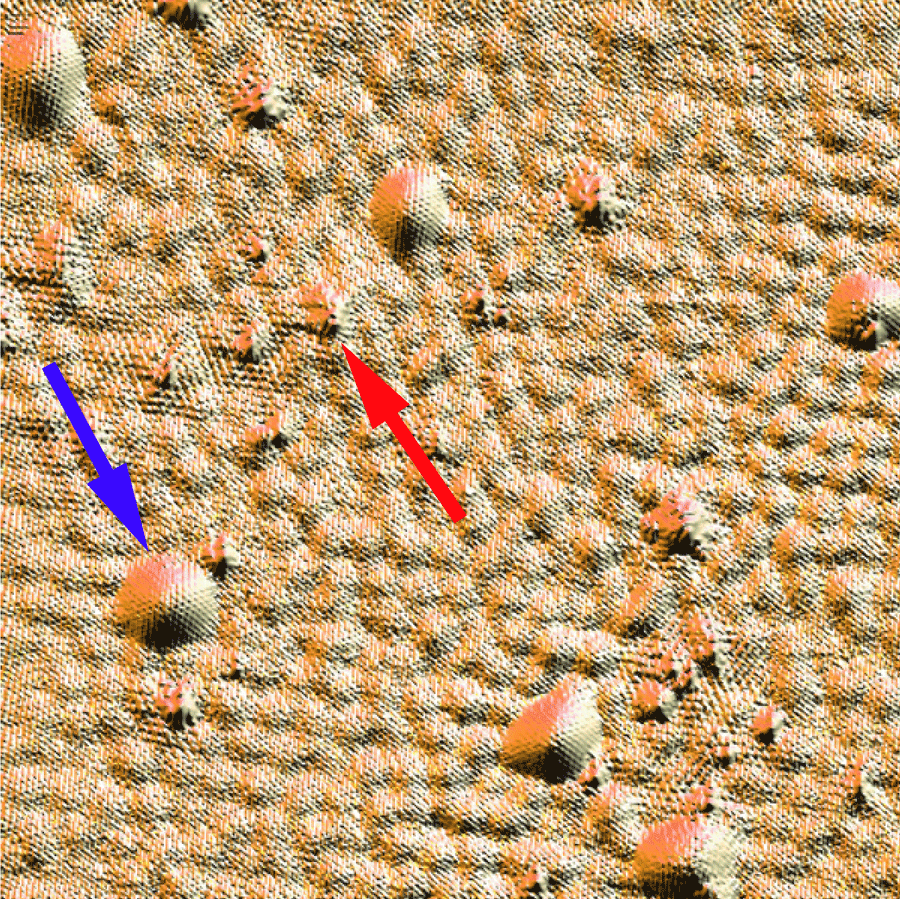The Electron Physics Group, part of NIST’s
Center for Nanoscale
Science and Technology has the mission of
advancing measurement science for the determination of electronic
and magnetic properties of nanometer-scale systems.
|
|
 |
|
 |
 |
Comparison of an STM topographic image of a section of graphene sheet (figure 1) with spectroscopy
images of electron interference at three different energies shows strong interference patterns generated by atomic scale defects in the graphene crystal
(red arrows) but only modest disturbances caused by larger scale bumps in the sheet (blue arrows.) Analysis of the ripples shows that the electron energy
in graphene is inversely proportional to its wavelength, just like light waves. The area imaged is approximately 40 nanometers square.
See NIST News Article
Images Credit: NIST/Georgia Tech
|
Technical
inquiries: Jabez McClelland
National
Institute of Standards and Technology
100 Bureau Drive,
Stop 6202
Gaithersburg, MD 20899-6202
Website comments: epgwebmaster@nist.gov |
NIST
Conferences
NIST
Visitor Info
General NIST inquiries:
Public Inquiries Unit:
(301)
975-NIST (6478)
TTY (301) 975-8295 | |
 |

